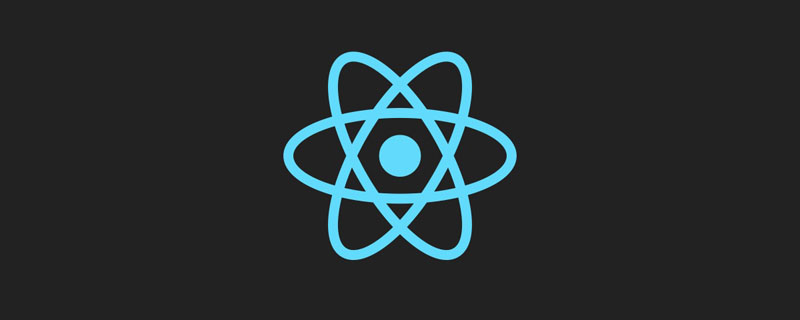 Backend Development
Backend Development PHP Tutorial
PHP Tutorial Exploration of architectural design and code specifications for large-scale projects using PHP framework
Exploration of architectural design and code specifications for large-scale projects using PHP frameworkLarge-scale PHP project architecture design and code specification architecture design: adopt clear layer structure, dependency inversion principle, domain-driven design and event-driven architecture. Coding standards: Develop standards for naming conventions, coding style, error handling, comments, and unit testing. Practical case: Take the Laravel framework project as an example to demonstrate the application of multi-layer architecture.

Exploring the architectural design and code specifications of large-scale projects using the PHP framework
When developing large-scale PHP projects, use appropriate Architectural design and code specifications are crucial. This article will delve into how to use PHP frameworks (such as Laravel, Symfony) to plan and build a well-architected project, and develop strict code specifications to ensure the efficiency of team collaboration and maintenance.
Architecture design
- Clear layer structure:Divide the application into different layers, such as data access, business logic and express. This helps keep your code manageable and testable.
- Dependency Inversion Principle: Decouple components through interfaces or abstract classes to improve reusability and flexibility.
- Domain-driven design: Organize business logic into entities and aggregates that reflect the application domain.
- Event-driven architecture: Use events and subscriber patterns to decouple components and achieve asynchronous communication.
Code specifications
- Naming convention: Establish a consistent naming convention, including the naming format of classes, methods and variables .
- Coding style: Use code formatting tools or follow coding standards such as PS R-2 or PSR-12.
- Error Handling: Define a clear error and exception handling strategy to handle errors consistently and prevent code corruption.
- Comments: Add clear, accurate comments to document the purpose, behavior, and any limitations of the code.
- Unit testing: Write comprehensive unit tests to verify the behavior of the code and improve reliability and maintainability.
Practical case: Laravel project architecture
The following is an example architecture of a large project built using the Laravel framework:
- Model layer: Define database interaction, data conversion and validation.
- Service layer: Encapsulates business logic and domain objects, is responsible for operating the model and returning results.
- Controller layer: Responsible for processing HTTP requests, coordinating the processing of requests and returning responses.
- Resource layer: Define the routes, views and controllers used for the front-end interface to provide the functionality of the application.
Conclusion
By following these guidelines and applying them to large PHP projects, developers can create well-architected, maintainable code bases . This will improve teamwork efficiency, reduce maintenance costs, and ensure high quality and reliability of applications.
The above is the detailed content of Exploration of architectural design and code specifications for large-scale projects using PHP framework. For more information, please follow other related articles on the PHP Chinese website!
 如何使用PHP和PHPUnit检查代码规范和质量Jun 25, 2023 pm 04:57 PM
如何使用PHP和PHPUnit检查代码规范和质量Jun 25, 2023 pm 04:57 PM在现代的软件开发中,代码质量和规范是极为重要的因素。不仅可以让代码更加整洁易于维护,还可以提高代码的可读性和可扩展性。但是,如何检查代码的质量和规范呢?本文将介绍如何使用PHP和PHPUnit来实现这一目标。第一步:检查代码规范在PHP开发中,有一种非常流行的代码规范,它被称为PSR(PHP标准规范)。PSR规范的目的是使PHP代码更具可读性和可维护性。其中
 Java开发中如何进行代码文档的编写和维护Oct 10, 2023 pm 08:22 PM
Java开发中如何进行代码文档的编写和维护Oct 10, 2023 pm 08:22 PMJava开发中如何进行代码文档的编写和维护在Java开发过程中,代码的文档编写和维护是非常重要的一部分。一个好的代码文档可以提高代码的可读性和可维护性,方便项目成员之间的协作和沟通,同时也有助于后期代码的维护和迭代。注释的使用注释是代码文档的基础,它可以用来解释代码的作用、实现逻辑、参数说明等。在Java中,有三种注释形式:单行注释(//)、多行注释(/.
 良好架构:使用Go语言构建高扩展性分布式系统Jun 18, 2023 pm 02:32 PM
良好架构:使用Go语言构建高扩展性分布式系统Jun 18, 2023 pm 02:32 PM作为一款高性能的编程语言,Go语言在分布式系统的建设中非常流行。它的高速度和极低的延迟时间让开发人员更加容易实现高扩展性的分布式架构。在构建分布式系统前,需考虑的架构问题非常繁琐。如何设计出更加易于维护、可扩展和稳定的架构是所有分布式系统开发者面临的重要问题。使用Go语言来构建分布式系统,可以使这些架构选择变得更加简单和明晰。高效的协程Go语言天生支持协程,
 go-zero架构设计模式及最佳实践Jun 22, 2023 pm 12:07 PM
go-zero架构设计模式及最佳实践Jun 22, 2023 pm 12:07 PM随着互联网的迅猛发展,软件开发变得越来越复杂。为了应对这一挑战,软件架构也不断演进,从最初的单体应用,到微服务架构。而随着微服务架构的普及,越来越多的开发者开始采用gRPC作为微服务之间的通信协议。go-zero就是一套基于gRPC构建的微服务框架。本文将介绍go-zero的架构设计模式及最佳实践。一、go-zero框架架构图1:go-zero框架架构如图1
 如何通过PHP代码规范规范性能优化Aug 11, 2023 pm 03:51 PM
如何通过PHP代码规范规范性能优化Aug 11, 2023 pm 03:51 PM如何通过PHP代码规范规范性能优化引言:随着互联网的迅速发展,越来越多的网站和应用程序基于PHP语言开发。在PHP开发过程中,性能优化是一个至关重要的方面。一个高性能的PHP代码可以显著提高网站的响应速度和用户体验。本文将探讨如何通过PHP代码规范来规范性能优化,并提供一些实际的代码示例供参考。一、减少数据库查询在开发过程中,频繁的数据库查询是一个常见的性能
 深入理解React的自定义HookApr 20, 2023 pm 06:22 PM
深入理解React的自定义HookApr 20, 2023 pm 06:22 PMReact 自定义 Hook 是一种将组件逻辑封装在可重用函数中的方式,它们提供了一种在不编写类的情况下复用状态逻辑的方式。本文将详细介绍如何自定义封装 hook。
 如何在开发环境中设置代码规范提醒以保持最新PHP代码规范的使用?Sep 05, 2023 am 09:18 AM
如何在开发环境中设置代码规范提醒以保持最新PHP代码规范的使用?Sep 05, 2023 am 09:18 AM如何在开发环境中设置代码规范提醒以保持最新PHP代码规范的使用?摘要:在开发过程中,遵循代码规范可以提高代码的可读性和维护性。本文将介绍如何使用代码规范检查工具和IDE来设置代码规范提醒,以帮助开发者保持最新的PHP代码规范。一、代码规范检查工具代码规范检查工具可以在代码编写的过程中检测并提醒不符合规范的代码。以下是几个常用的PHP代码规范检查工具。PHP
 golang函数的代码风格规范Apr 28, 2024 pm 05:48 PM
golang函数的代码风格规范Apr 28, 2024 pm 05:48 PMGo函数代码风格规范遵循最佳实践来确保代码可读性和可维护性,包括:函数名小写字母开头,单词用下划线分隔。参数类型在参数名称之前,用逗号分隔。返回值类型在函数体之前声明。代码段简短可读,使用空行分隔。编写清晰的注释解释代码意图。变量名小写字母开头,驼峰式命名法。常量名全部大写,下划线分隔单词。接口名称以"I"前缀开头。


Hot AI Tools

Undresser.AI Undress
AI-powered app for creating realistic nude photos

AI Clothes Remover
Online AI tool for removing clothes from photos.

Undress AI Tool
Undress images for free

Clothoff.io
AI clothes remover

AI Hentai Generator
Generate AI Hentai for free.

Hot Article

Hot Tools

MinGW - Minimalist GNU for Windows
This project is in the process of being migrated to osdn.net/projects/mingw, you can continue to follow us there. MinGW: A native Windows port of the GNU Compiler Collection (GCC), freely distributable import libraries and header files for building native Windows applications; includes extensions to the MSVC runtime to support C99 functionality. All MinGW software can run on 64-bit Windows platforms.

DVWA
Damn Vulnerable Web App (DVWA) is a PHP/MySQL web application that is very vulnerable. Its main goals are to be an aid for security professionals to test their skills and tools in a legal environment, to help web developers better understand the process of securing web applications, and to help teachers/students teach/learn in a classroom environment Web application security. The goal of DVWA is to practice some of the most common web vulnerabilities through a simple and straightforward interface, with varying degrees of difficulty. Please note that this software

Safe Exam Browser
Safe Exam Browser is a secure browser environment for taking online exams securely. This software turns any computer into a secure workstation. It controls access to any utility and prevents students from using unauthorized resources.

SAP NetWeaver Server Adapter for Eclipse
Integrate Eclipse with SAP NetWeaver application server.

mPDF
mPDF is a PHP library that can generate PDF files from UTF-8 encoded HTML. The original author, Ian Back, wrote mPDF to output PDF files "on the fly" from his website and handle different languages. It is slower than original scripts like HTML2FPDF and produces larger files when using Unicode fonts, but supports CSS styles etc. and has a lot of enhancements. Supports almost all languages, including RTL (Arabic and Hebrew) and CJK (Chinese, Japanese and Korean). Supports nested block-level elements (such as P, DIV),





